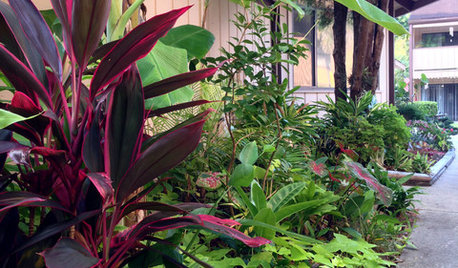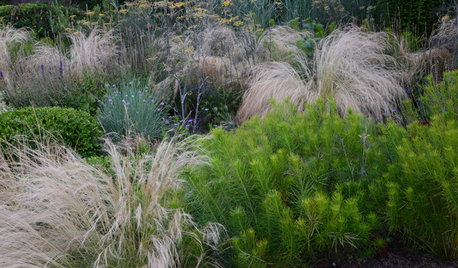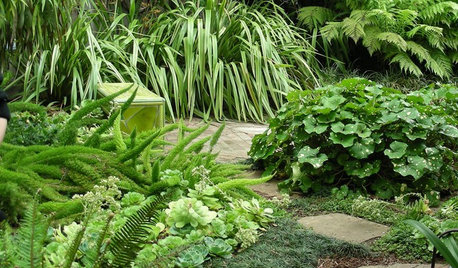peace lily transplant to gritty mix?
andersons21
12 years ago
Related Stories

GARDENING GUIDESA Mom, a Garden and a Gift for the Neighbors
Gardening can be therapeutic in unexpected ways. See how one gardener found peace and purpose in a patch of Florida soil
Full Story
LIFEHow Your Landscaping Can Keep Burglars Away
Prevent home break-ins with strategic landscaping and good practices instead of menacing — and maybe less effective — measures
Full Story
GARDENING GUIDESHouzz Call: What’s Your Favorite Backyard Beauty?
The simple, honest daisy is this writer’s go-to garden flower. We want to hear which plant, flowering or otherwise, gives you special joy
Full Story
HOUSEPLANTS8 Essentials for Healthy Indoor Plants
Houseplants add so much to our homes — and can thrive when grown in the right conditions. Keep these tips in mind
Full Story
GARDENING GUIDES4 Ways to Break the Rules in Your Garden
For a more creative landscape design, take a different approach to planting
Full Story
HOUZZ TVHouzz TV: Color-Happy Country Living in Fort Worth
See how this family’s Texas-sized home celebrates its whimsical, collected style through vibrant textiles and graphic patterns
Full Story
GARDENING GUIDES10 Tips to Start a Garden — Can-Do Ideas for Beginners
Green up your landscape even if you're short on time, money and knowledge, with these manageable steps for first-time gardeners
Full Story
PLANTING IDEAS8 Sumptuous Shade Garden Plant Combinations
Enjoy these plant combinations made for spots with varying levels of shade and different garden zones
Full Story
GARDENING GUIDESLet's Weed Out 4 Native Plant Myths
Plant wisely for a garden that supports pollinators and requires less work
Full Story
SAVING WATERXeriscape Gardens: How to Get a Beautiful Landscape With Less Water
Conserve water and make gardening much easier with the xeriscape approach’s 7 principles
Full StoryMore Discussions





tommyr_gw Zone 6
tapla (mid-Michigan, USDA z5b-6a)
Related Professionals
Surprise Landscape Architects & Landscape Designers · Roxbury Crossing Landscape Architects & Landscape Designers · Aberdeen Landscape Contractors · Ashburn Landscape Contractors · Choctaw Landscape Contractors · Conroe Landscape Contractors · Cornelius Landscape Contractors · Deer Park Landscape Contractors · Elmhurst Landscape Contractors · Gainesville Landscape Contractors · Norristown Landscape Contractors · Old Saybrook Landscape Contractors · Panama City Beach Landscape Contractors · Chicago Ridge Landscape Contractors · Palos Heights Landscape Contractorsssmdgardener
marquest
tapla (mid-Michigan, USDA z5b-6a)
greenman28 NorCal 7b/8a
marquest
andersons21Original Author
ssmdgardener
tapla (mid-Michigan, USDA z5b-6a)